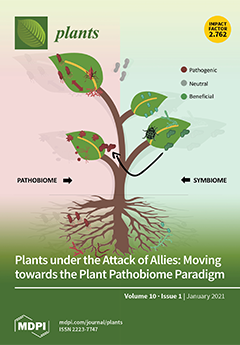Medicinal plants of the
Plectranthus genus (Lamiaceae) are well known for their ethnomedicinal applications.
Plectranthus madagascariensis, which is native to South Africa, is traditionally used in the treatment of respiratory conditions, scabies, and cutaneous wounds. The phytochemical studies of
P. madagascariensis led
[...] Read more.
Medicinal plants of the
Plectranthus genus (Lamiaceae) are well known for their ethnomedicinal applications.
Plectranthus madagascariensis, which is native to South Africa, is traditionally used in the treatment of respiratory conditions, scabies, and cutaneous wounds. The phytochemical studies of
P. madagascariensis led to the isolation of five known royleanone abietanes, namely, 6β,7α-dihydroxyroyleanone (
1), 7α-acetoxy-6β-hydroxyroyleanone (
2), horminone (
3), coleon U quinone (
4), and carnosolon (
5). The relative configuration of compound
2 was established by X-ray analysis. Compounds
1–
4 showed antimycobacterial activity (Minimum inhibitory concentration for 90% inhibition, MIC
90 = 5.61–179.60 μM) against
Mycobacterium tuberculosis H
37Rv. Compound
4 and
5 showed comparable toxicity (Concentration for 50% inhibition, IC
50 98.49 μM and 79.77 μM) to tamoxifen (IC
50 22.00 μg/mL) against HaCaT cells. Compounds
1–
5 showed antioxidant activity through single-electron transfer (SET) and/or hydrogen-atom transfer (HAT) with compound
5 being the most active antioxidant agent. Compounds
3 and
5 were isolated for the first time from
P. madagascariensis. The observed results suggest
P. madagascariensis as an important ethnomedicinal plant and as a promising source of diterpenoids with potential use in the treatment of tuberculosis and psoriasis.
Full article






